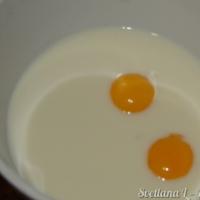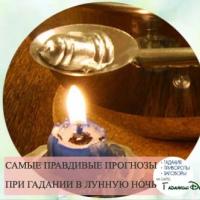Colored coat of arms of the Annenkov family. The Annenkovs are an old noble family. Origin and history of the family
Acceptance date: 03/21/2014
Number in Heraldic
Russian register: 9484
Rectangular
double-sided panel with attitude
width to length 2:3, composed of four
equal rectangular parts: red
and blue on the left and blue and
white on the right. On the yellow cloth,
reproduced in orange and blue
figures from the coat of arms of Annenkovsky rural
settlements.
Rationale
symbolism:
Administrative center
settlement is the village of Annenkovo-Lesnoye
- family estate of hereditary nobles
Annenkovs, which belonged to them hundreds
years. In the XVII - early XX centuries. representatives
the Annenkov family owned lands almost
in all districts of Simbirsk and many
districts of neighboring provinces, were officials
different departments and ranks, entrepreneurs
(distilleries and stud farms),
public figures. Among
"Simbirsk" Annenkovs can
highlight Alexander Ivanovich Annenkov
- a rich landowner, second major,
which in the second half of the 18th century
enjoyed fame in the province.
He built the stone Trinity in 1793
church in the village of Annenkovo, Karsunsky
district (now Mainsky district).
Peasants
were mainly engaged in agriculture.
Among the crafts it was especially developed
twisting hemp ropes. Right here
there was an "establishment for production"
agricultural implements and machines" -
one of three in the province.
Currently
time is the basis of settlement life
agricultural activities -
growing grain and vegetable crops,
production of meat and milk. In the territory
settlement is located Ulyanovskaya
regional experimental station of animal husbandry,
experimental production farm, with
autumn 1993 - research
Ulyanovsk livestock station
Research Institute of Agriculture
Symbolism
coat of arms of the Annenkovsky rural settlement
is multi-valued and reflects both its history,
and so is the present:
- scarlet, twice
azure and silver field, as well as
star - consonant with figures and division
coat of arms of the Annenkov family, which symbolizes
connection of times. The star is a symbol of faith,
guidance and hope;
- figure of a horse
symbolically reflects the location
previously on the territory of Annenkovsky
rural settlement horse breeder's factory
I.F. Akhmatova;
- figure of a bull
symbolizes research
Ulyanovsk livestock station
Research Institute of Agriculture. The station was
formed for breeding Bestuzhevskaya
breed of cows, which belongs to breeds
universal (milk and meat)
productivity areas;
-
figures of a bull and horse depicted
coming out (half visible) -
allegorically symbolize further
development of both the station itself and the whole
agriculture of the settlement.
Chervlen
(red color) - a symbol of labor, courage,
life-affirming strength, beauty and
holiday.
Azure - a symbol of location
settlements on the Maina River, as well as a symbol
lofty aspirations, sincerity,
devotion, rebirth.
Silver
- symbol of purity, openness, divine
wisdom, reconciliation.
Gold -
symbol of the highest value, greatness,
wealth, harvest.
Author group:
Idea
coat of arms: Nail Rakhimov (village of Annenkovo-Lesnoye),
Konstantin Mochenov (Khimki).
Artist
and computer design: Anna Garcia
(Moscow).
Rationale for symbolism:
Konstantin Efimovsky (Arkhangelsk),
Vyacheslav Mishin (Khimki).
Approved by decision of the Council of Deputies
municipal formation "Annenkovskoye"
rural settlement" (
The Annenkov family is recorded in the VI part of the genealogical books of the provinces: Kursk, Nizhny Novgorod and Kharkov. There is also a branch of the Annenkovs, probably of the same family, dating back to 1635 and recorded in part VI of the genealogical book of the Penza province.
Description of the coat of arms
The shield is divided into four parts, in the first, in a red field, a silver heart is depicted, pierced by a spear. In the second part, in a blue field, there is a large silver quadrangular star, next to which four small silver stars are visible, like a cross, and above them a noble crown. In the third part, in a blue field, there are two birds facing one another and above them a noble crown. In the fourth part, in the silver field, there is a tree branch with small leaves and fruits at the upper ends. The shield is crowned with an ordinary noble helmet with a noble crown on it. The border on the shield is red, lined with silver.
The coat of arms of the Annenkov family is included in Part 1 of the General Arms of Arms of the Noble Families of the All-Russian Empire, p. 54
Famous representatives of the Annenkov family:
Annenkov, Vladimir Egorovich (1795-1875) - lieutenant general, Podolsk and Vladimir governor.
, Boris Vladimirovich (1889-1927) - one of the leaders of the White movement in Siberia.
, Georgy Semyonovich (1848-1885) - Slavist and historian; son of S. E. Annenkov.
Annenkov, Evgraf Aleksandrovich (1763-1798) - major general, hero of the war against the Kosciuszko rebels.
, Ivan Alexandrovich (1802-1878) - Decembrist and zemstvo activist.
Annenkov, Konstantin Nikanorovich (1843-1910) - lawyer and zemstvo activist.
Annenkov, Mikhail Nikolaevich (1835-1899) - Russian general, builder of the Trans-Caspian railway; son of Adjutant General N.N. Annenkov.
Annenkov, Nikolai Epaphroditovich (1805-1826) - Russian poet.
, Nikolai Ivanovich (1819-1889) - Russian botanist.
Annenkov, Nikolai Nikolaevich (1793, according to other sources 1800-1865) - Russian military and statesman, adjutant general; father of M. N. Annenkov.
Annenkov, Nikolai Petrovich (1790-1865) - general from infantry, member of the council and inspector of military educational institutions, member of the Alexander Committee for the Wounded.
, Pavel Vasilyevich (1813, according to other sources 1812-1887) - Russian literary critic and memoirist.
Annenkov, Semyon Epaphroditovich - agricultural specialist.
, Yuri Pavlovich (1889-1974) - Russian painter and graphic artist, theater and film artist, writer (pseudonym Boris Timiryazev); son of Narodnaya Volya member P.S. Annenkov.
Annenkova, Varvara Nikolaevna (1795-1870) - Russian writer and poetess.
ANNENKOVS are an old noble family known since the 12th century. The branch, which originated from Vasily Annenkov, has been known since the first half of the 16th century and owned estates in the Oryol region. Some of their descendants moved to Kursk, Nizhny Novgorod and Simbirsk provinces. The Annenkov family is recorded in Part VI of the genealogical books of Kursk and other provinces. Many of the Annekov family occupied prominent official and public positions in the Russian state, and some distinguished themselves in the military, academic and literary fields.
Antip (Ontip) Ivanovich A. - Oryol landowner (1594).
Ivan Antipovich A. - Cossack head.
In 1615 he moved to Kursk from the Oryol inheritance.
In 1616 - 1617 Acted as governor of Kursk. Known for his numerous victories over the troops of the Crimean Tatars in 1616, 1618, 1623 and 1632.
In 1623 he defeated the army of Urak-Murza on the banks of the river. Seimas at the Dumchev Kurgan, for which he was honored to become a seunshchik (messenger of victory) and received as a reward from Tsar Mikhail Fedorovich “...nine rubles and cloth for good.”
In 1618, following Ivan Antipovich, his brothers Mikhail, Lev, Potap, Nikita (Nikifor) moved from the Oryol region to serve in Kursk, becoming the ancestors of various branches of the Kursk Annekov family.
Mikhail Antipovich A. - “served by choice.” In Kursk district he had an estate of 615 chets (chet is a land measure, approximately 0.5 hectares) and 20 peasant households.
Lev Antipovich A. (Warrior) - an elected nobleman of the first article, “for every care” was placed over the Cherkassy, who moved to Kursk district from Right Bank Ukraine. He had an estate of 700 households and 30 peasant households.
Prokofy (Ivanovich?) A. - provincial head of the Kursk Voivodeship from 1650 to 1653.
In 1668, he received a letter from Tsar Mikhail Fedorovich, which said: “we praise his great service, crafts and courage in different countries and grant 140 honors to his family and local salary.” In the Kursk district, he was granted the villages of Polyanskoye and Voskresenskoye.
Akim Mikhailovich A. is the son of Mikhail Antipovich.
In 1668, for “... his great service, industry and courage”, “... Polish service” in the Kursk district, 140 men of land were granted. At the end of his life he owned 730 acres of land. After his death in the 1680s, his estates were divided among his five sons:
Semyon Akimovich A. - breeder (1655 - 1687),
Leonty Akimovich A.,
Vasily Akimovich A. - Kursk city nobleman,
Evsiafiy Akimovich A. (died childless),
Gerasim Akimovich A. (III.1657-28.I.1745) - resident of Kursk, governor in Belgorod (17.XII.1684-19.XII.1693).
In 1708 he collected recruits in Belgorod. He had 319 children in the field, 36 peasant households.
In 1729, by Decree of the Senate, he was “retired from business due to old age and illness.”
Buried in the village. Polyansky.
Maxim Nikiforovich A. - son of a boyar.
In April 1684, by order of the Kursk governor A.S. Sheina studied the circumstances of the discovery of the bones of a “volot” (a fairy-tale giant) in the Pesochny Kolodez tract near Olshanka (now Kharkov region). By decree of Peter I received land holdings in Kursk district.
Pyotr Gerasimovich - son of Gerasim Akimovich, prime major in Bush's regiment (1710) Had 15 households in the village of Karmanova.
In January 1712 he died in Riga.
His wife Tatyana Semyonovna died on November 21, 1749. She was buried at the Resurrection Church in the village. Polyansky Belgorod governorship.
Mikhail Timofeevich A. (1721–1786) - Kursk landowner.
Semyon Mikhailovich A. - son of Mikhail Timofeevich, state councilor, major general, owner of an estate in the village of Mokva, provincial leader of the Kursk nobility 1789 - 1802. As a member of the Special Committee for Supervision of the Press, he is known for his protests against the publication of folklore in the newspaper Kursk Provincial Gazette.
Alexander Semenovich A. - son of Semyon Mikhailovich, Rylsky and Nizhyn landowner.
Ivan Petrovich A. (1711-16.III.1784) - grandson of Gerasim Akimovich, son of Pyotr Gerasimovich, nobleman, landowner, second-major, court councilor (from 22.VIII.1763), deputy in the commission for drawing up a new code, Kursk voivode (1749).
In February 1754, the Senate dismissed him “from all affairs” with the rank of court councilor.
1780 – 1783 - Kursk district leader of the nobility.
Ivan Petrovich's estates were scattered throughout the Kursk province, in particular, he was the owner of estates in the villages of Lebyazhye and Mokva (from 1756) Kursk district, etc. But the main estate was located in the village. Karmanovo, where he built stone chambers and laid out a “regular” garden “with fruitful apple, pear, plum, cherry, bonbarost (barberry), gooseberry, black and red currant trees.”
In 1774, Ivan Petrovich had 1,400 male peasants. By the end of his life he owned 3,746 acres of arable land.
Ivan Petrovich combined successful entrepreneurship with philanthropy: he started a serf theater, collected a rich library with a large department of manuscripts. By his order, documents on the history of the Kursk region of the 13th – 17th centuries preserved in the city and monastery archives were copied: scribal books, monastic chronicles, acts of land surveying, etc. sources. These lists from the collection of Ivan Petrovich A. were widely used with his permission by I. F. Bashilov, S. I. Larionov and other local historians of Kursk.
In the State Archive of the Kursk Region. a unique diary of Ivan Petrovich is kept, which was kept for 16 years with descriptions of the estates of the Kursk province, which were economic, social and cultural centers.
Children: Alexander, Abraham, Ivan, Peter, Tatyana (married Annenkova).
Alexander Ivanovich A. (1734-After 1785) - court councilor, captain of the cavalry guards. He took part in the seven-year Russian-Prussian war and was captured.
In 1761 he retired with the rank of second major. He was the Sumy district leader of the nobility, chairman of the Kharkov provincial magistrate.
From October 20, 1783 - Advisor to the Kharkov Treasury Chamber.
From January 20, 1785 - provincial secretary. Owned s. Ozerki in Shchigrovsky district.
Ivan Aleksandrovich A. - son of Alexander Ivanovich, zemstvo head of the Shchigrovsky district of the Kursk province, owner of the village. Ozerki.
Abraham Ivanovich A. (1738-1810) - acting. State Councillor. He served in the Life Guards Izmailovsky Regiment. After retirement - vice-governor of the Kharkov province, chairman of the Kursk and Tambov criminal chambers.
From 1783 to 1786 - Lieutenant of the Ruler of the Kursk Governorship under the Governor F.N. Klitschka.
Pyotr Avraamovich A. (1784-Unknown) - colonel, son of Avraam Ivanovich, served in the Life Guards Izmailovsky Regiment. After retirement - leader of the nobility of the Kursk province (1825-1830), state councilor.
Ivan Aleksandrovich A. (1802–1878) – great-grandson of Semyon Mikhailovich, grandson of Alexander Semyonovich, lieutenant of the cavalry regiment, Decembrist, member of the Northern Society. For participation in the events of December 14, 1825, he was sentenced to 20 years of hard labor, and upon its completion - to lifelong settlement in Siberia. He was sent to the place of hard labor - the Nerchinsky mine - in leg and hand shackles. His fiancée, Frenchwoman Pauline Gebl, followed him. Having married a convict, she became Praskovya Annenkova.
In 1856 his rights were restored.
Since 1861, Nizhny Novgorod district leader of the nobility.
Yakov Ivanovich A. - captain of the army infantry.
From 1850 to 1855 - deputy in the Noble Assembly of the Kursk province from the Lgov district.
In May 1862, in pursuance of the laws of the Peasant Reform of 1861, he transferred his lands to the peasants for a ransom.
Joasaf Yakovlevich A. - provincial secretary;
Lev Yakovlevich A. - titular councilor, member of the Duma of the Kursk province from 1893 to 1896. from Lgovsky district, member of the district land management commission (1909).
Maria Yakovlevna A. (Unknown - 1877) - granddaughter of Lev Yakovlevich.
She died and was buried in Moscow at the Donskoy Monastery cemetery.
Pyotr Ivanovich A. (1746-After 1830) - colonel.
From 1761 to 1782 he served in the Izmailovsky Life Guards Regiment.
From 1782 - first member in the 1st department of the Patrimonial Collegium, chairman of the Ufa Criminal Chamber. After the death of his father, he took possession of the village. Zherebtsovo.
On December 22, 1784, he was awarded the rank of state councilor and appointed conscience judge of the Kursk governorship.
From July 30, 1786 to May 14, 1789 was retired.
In 1798 - 1801 - leader of the nobility of the Kursk province. Wife - Olimpiada Nikanorovna Konshina (died no earlier than 1834).
Ivan Petrovich A. (1777) - lieutenant colonel.
Nikolai Petrovich A. (1790-1865) - general from infantry, member of the council and inspector of military educational institutions, member of the Alexander Committee for the Wounded.
Mikhail Petrovich A. - Guard Staff Captain.
From 1822 to 1825 - leader of the nobility of Dmitrievsky district.
In 1850-1855 - conscientious judge and member of the committee of trustees for the prisons of the Kursk province.
Varvara Petrovna A. (born 1776).
Anna Petrovna A. (born 1781).
Elizaveta Petrovna A.
Pavel Nikolaevich A. - colonel, leader of the nobility of the Kursk district 1855-1860.
Vasily Vasilyevich A. - lieutenant, judge of the Grayvoronsky district court of the Kursk province (1855).
Epaphroditus A. is one of the descendants of the Kursk branch of the Annenkovs. His children: Nikolai and Semyon.
Nikolai Epaphroditovich A. (5.IX.1805-31.V.1826) - poet. Genus. in Kursk. From the age of 10 he lived in St. Petersburg, studied at the provincial gymnasium and at the same time with home teachers.
From 1821 he served in the Department of the Ministry of Justice. Having no inclination for civil service, he entered the Cavalry Regiment as a cadet. Drowned in the Neva.
The only collection “Works of Nikolai Annenkov in verse and prose” (St. Petersburg, 1827) was published after his death by friends and relatives. He wrote a number of fables, moral and satirical poems (“Koshchei’s Prayer”), a one-act comedy and a prose story in the folk style “Vasilisa and Natalya” (with jokes, refrains, sayings).
Semyon Epaphroditovich A. (28.I.1822-Unknown) - forestry scientist, founder of the first Forestry Society in Russia, a graduate of the Institute of the Corps of Railway Engineers.
Ivan Ivanovich A. (1835-1886), officer of the Life Guards Izmailovsky Regiment.
Georgy Semyonovich (1.XII.1848-8.II.1885) - son of Semyon Epaphroditovich, a learned Slavist and historical writer who began investigating the history of Protestantism and Hussites in the Czech Republic and Poland in the 16th century, a master's student at St. Petersburg University. He died before he could publish his master's thesis.
Konstantin Nikanorovich A. (1843-28.II.1910) writer, lawyer, Kursk zemstvo figure. Genus. in the village Ivnitsa, Lgov district, Kursk province. After completing a course in legal sciences at Kharkov University, he was elected (in 1868) as a local justice of the peace in his native district, and a zemstvo councilor.
From 1873 to 1888 was an honorary justice of the peace and chairman of the Lgov World Congress, and was elected leader of the nobility of the Lgov district. The local zemstvo owes a number of educational, medical and charitable institutions to his initiative.
Main works: 6-volume monograph “Experience of a commentary on the statute of civil proceedings”, published in St. Petersburg in the period from 1878 to 1885, “Tasks of the provincial zemstvo” (St. Petersburg, 1890), as well as the popular textbooks “Beginnings of Russian civil Law" (St. Petersburg, 1900), "The System of Russian Civil Law" (St. Petersburg, 1910), etc. In addition to these works, he wrote a number of articles in the "Court Journal", "Journal of the Ministry of Justice" and "Bulletin of Europe".
Leonila Fominichna A. (1844-1914) - wife of Konstantin Nikanorovich, friend of the family of L. N. Tolstoy and a follower of his teachings.
Source:
ADDRESS-CALENDAR, or the general staff of the KURSK PROVINCE 1855.
Zamyatnin S.N. The first Russian instructions for excavations (The discovery of the “volot” bones in 1679) // Soviet Archeology. T. XIII. M., 1950;
V.V. Dmitrieva. The history of the provincial noble family of I. P. Annenkov. Kursk State University, Kursk, 2011.
Introduction
The Annenkovs are a Russian noble family.
1. Origin and history of the family
There are five surnames of this name. The oldest of them comes from Vasily Annenkov, who lived in the first half of the 16th century. Like many nobles in the 18th century, the Annenkovs were in military service, and the son of one of them, Nikolai Nikolaevich, adjutant general (born, according to some sources, in 1793, and according to others, in 1800), was brought up in the Moscow University boarding school . Annenkov, being an adjutant of Grand Duke Mikhail Pavlovich, participated in the capture of Brailov. During the Polish campaign, he was the chief of staff of Osten-Sacken's corps and, commanding a separate detachment, defeated two united detachments of insurgents, earning the Order of St. George; was also the main figure in the defeat of Gelgud, 7 versts from Vilna; During the storming of Warsaw, Annenkov was one of the first to enter the city. In Kalisz (1835) during the gathering of troops he was a commander, and from 1836 he commanded the Izmailovsky regiment; in 1842 he was appointed director of the office of the War Ministry, in 1849 he oversaw Western Siberia - its military and civil administration, from March 20, 1854 to April 17, 1855, he held the post of Novorossiysk and Bessarabian governor-general, and then state controller, in which position he remained until December 6, 1862, and in 1862 he was appointed governor-general of Kyiv, Podolsk and Volyn. He remained in the latter place until January 19, 1865, and died in November of the same year. Annenkov was also a member of the State Council.
The Annenkov family is recorded in the VI part of the genealogical books of the provinces: Kursk, Nizhny Novgorod and Kharkov. There is also a branch of the Annenkovs, probably of the same family, dating back to 1635 and recorded in part VI of the genealogical book of the Penza province.
2. Description of the coat of arms
The shield is divided into four parts, in the first, in a red field, a silver heart is depicted, pierced by a spear. In the second part, in a blue field, there is a large silver quadrangular star, next to which four small silver stars are visible, like a cross, and above them a noble crown. In the third part, in a blue field, there are two birds facing one another and above them a noble crown. In the fourth part, in the silver field, there is a tree branch with small leaves and fruits at the upper ends. The shield is crowned with an ordinary noble helmet with a noble crown on it. The border on the shield is red, lined with silver.
The coat of arms of the Annenkov family is included in Part 1 of the General Arms of Arms of the Noble Families of the All-Russian Empire, p. 54
3. Famous representatives of the Annenkov family
Annenkov, Boris Vladimirovich (1889-1927) - one of the leaders of the White movement in Siberia.
Annenkov, Georgy Semyonovich (1848-1885) - Slavist and historian; son of S. E. Annenkov.
Annenkov, Konstantin Nikanorovich (1843-1910) - lawyer and zemstvo activist.
Annenkov, Mikhail Nikolaevich (1835-1899) - Russian general, builder of the Trans-Caspian railway; son of Adjutant General N.N. Annenkov.
Annenkov, Nikolai Epaphroditovich (1805-1826) - Russian poet.
Annenkov, Nikolai Ivanovich (1819-1889) - Russian botanist.
Annenkov, Nikolai Nikolaevich (1793, according to other sources 1800-1865) - Russian military and statesman, adjutant general; father of M. N. Annenkov.
Annenkov, Pavel Vasilyevich (1813, according to other sources 1812-1887) - Russian literary critic and memoirist.
Annenkov, Semyon Epaphroditovich - agricultural specialist.
Annenkov, Yuri Pavlovich (1889-1974) - Russian painter and graphic artist, theater and film artist, writer (pseudonym Boris Timiryazev); son of Narodnaya Volya member P.S. Annenkov.
Annenkova, Varvara Nikolaevna (1795-1870) - Russian writer and poetess.
Bibliography:
Encyclopedic Dictionary of F. A. Brockhaus and I. A. Efron. In 86 volumes with illustrations and additional materials, St. Petersburg, 1890-1907
Polovtsov A. A. Russian Biographical Dictionary.
Part 1 of the General Armorial of the Noble Families of the All-Russian Empire, p. 54
Source: http://ru.wikipedia.org/wiki/Annenkovs
 Step-by-step recipes for batter for a pie How to make a pie from poured dough
Step-by-step recipes for batter for a pie How to make a pie from poured dough What can be prepared from stale bread What can be prepared from rye bread
What can be prepared from stale bread What can be prepared from rye bread Japanese mochi How to cook mochi at home
Japanese mochi How to cook mochi at home Why do you dream of sailing - interpretation of sleep from dream books
Why do you dream of sailing - interpretation of sleep from dream books Big Lenormand layout, or aerobatics
Big Lenormand layout, or aerobatics Wax fortune telling: correct interpretation of figures
Wax fortune telling: correct interpretation of figures Chocolate dipped cakes: recipes with photos and videos
Chocolate dipped cakes: recipes with photos and videos